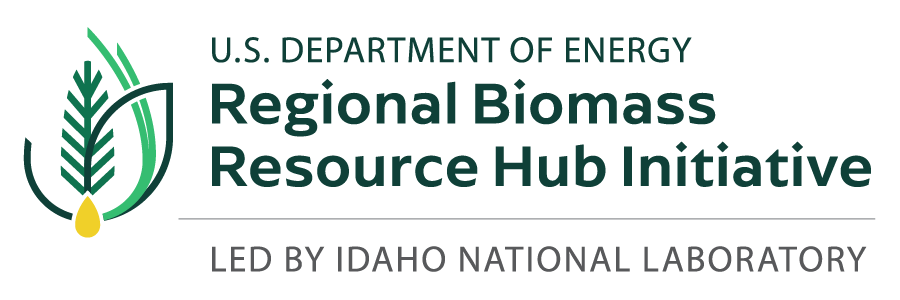About Us
The Regional Biomass Resource Hub Initiative’s mission is to mobilize and expand the availability of biomass and waste feedstock by fostering cross-market partnerships through extensive stakeholder networks representing groups from feedstock producers to market end users. Additionally, the RBRH generates and manages comprehensive data to enable modeling tools, data, and guidelines that support the development of best management practices and facilitate robust supply chains.
The RBRH is focused on the following key areas:
- Demonstrating the long-term yield and resilience of production crop varieties capable of scaling up prior to or alongside the scale-up of other relevant market production facilities.
- Validating carbon intensity scores and other critical metrics to support grower adoption and work to develop resilient bioproducts and fuels.
- Expanding potential regional biomass resources (e.g., algae, herbaceous crops, short-rotation woody crops and intermediate crops) and demonstrating production capabilities to improve energy independence.
- Verifying and validating the effectiveness of improved agronomic practices to improve the resilience and security of domestic biomass resources across several regions, feedstock types and growing seasons.
- Demonstrating production scale for production crop varieties shown to meet metrics to address broad challenges including pest pressures, drought, logging, large-scale propagation/planting and mechanical harvest compatibility.
- Collecting data in methods consistent with established protocols to support carbon and nutrient flux monitoring and validation, end-user quality specifications, sustainability measurements, and yield requirements.
Research
The Regional Biomass Resource Hub Initiative’s members are conducting research and development to enable mobilization of the following purpose-grown energy crops.
- Algae: Algae are simple, plant-like organisms that live in water. They are a diverse group that includes microalgae (microscopic algae), macroalgae and cyanobacteria (blue-green algae). Purpose-grown algae can be used to produce a variety of products, including biofuels, food and animal feed.
- Herbaceous energy crops: Herbaceous energy crops are annual, biennial, or perennial plants and grasses grown primarily to produce bioenergy. These include switchgrass, miscanthus, high-biomass sorghum, wheatgrass and energycane.
- Intermediate energy crops: Intermediate energy crops are planted between the harvest of a main crop and sowing of the next crop. These include carinata, camelina and pennycress. These crops may also provide additional benefits, such as water resource protection, reduced soil erosion and reduced nutrient loss.
- Short-rotation woody crops: Short-rotation woody crops are fast-growing trees harvested within five to eight years of planting. These include hybrid poplar, hybrid willow, silver maple, eastern cottonwood, green ash, black walnut, sweetgum and sycamore. Coppice management is commonly used for some of these crops.
